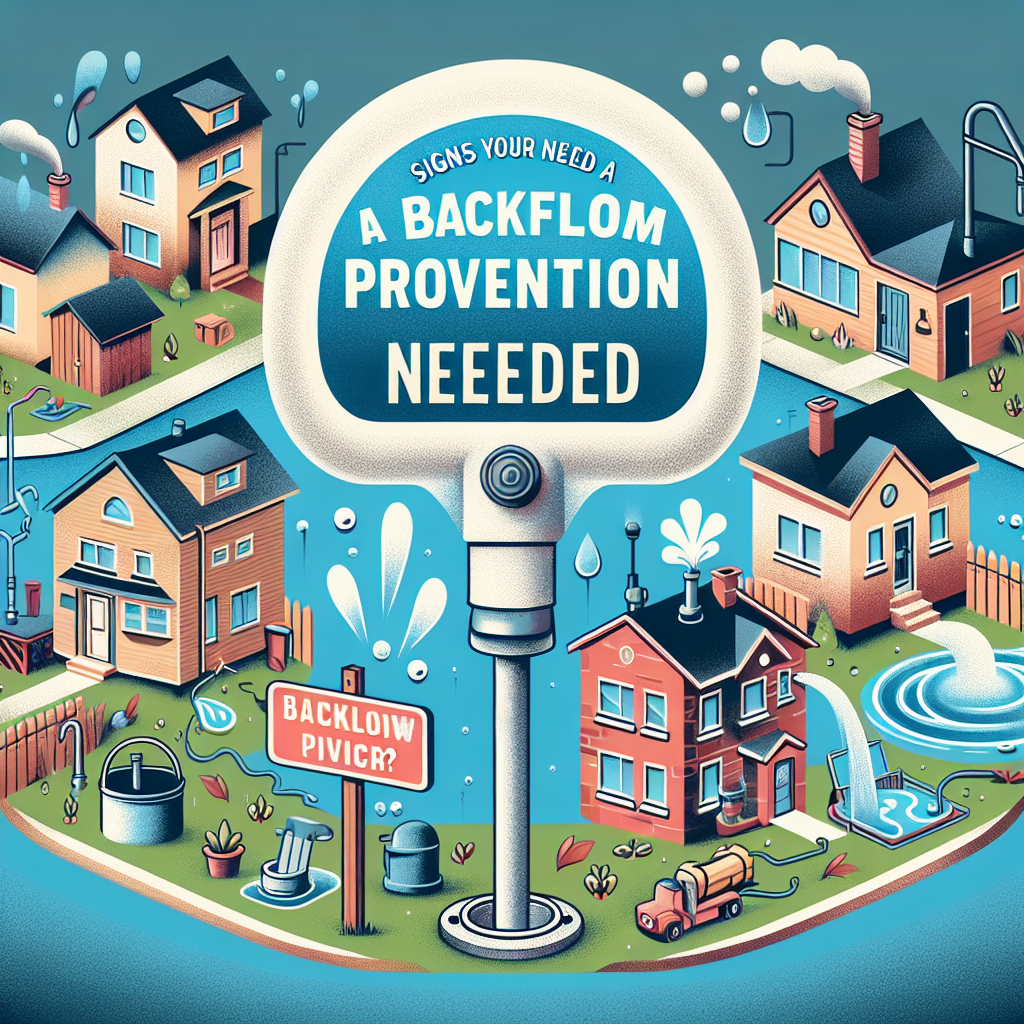Water is essential for life – it hydrates us, nourishes our crops, and keeps our homes running smoothly. However, when water systems are compromised, it can lead to serious health risks. One crucial component in safeguarding our water supply is the backflow prevention device. In this article, we will explore the signs that indicate your property may need a backflow prevention device and emphasize the importance of maintaining our water quality.
What Is Backflow and Why Is It a Concern?
Before diving into the signs that you need a backflow prevention device, it’s essential to understand what backflow is. Backflow occurs when water flows backward into the clean water supply. This reversal can result from various factors such as changes in pressure, pipe breaks, or plumbing malfunctions. The consequences of backflow can be dire, potentially leading to contamination with harmful bacteria, chemicals, or other toxins.
1. Aging Plumbing Infrastructure
Recognizing the Risks of Old Pipes
If your property has old or outdated plumbing, the risk of backflow increases significantly. Aging pipes may corrode or break, leading to leaks and disruptions in water pressure. If you notice any signs of deterioration, such as rust or discoloration in your water, it may be time to consider a backflow prevention device.
Regular Inspections Are Key
Conducting routine inspections of your plumbing system can help identify issues before they escalate into costly repairs or health risks. Hiring a professional plumber to examine your pipes annually can provide peace of mind and keep your system in top shape.
2. Changes in Water Pressure
Understanding Water Pressure Fluctuations
Have you noticed sudden changes in water pressure throughout your home? Fluctuating water pressure can lead to backflow situations, especially if the pressure drops significantly. This fluctuation may occur due to activities like firefighting, heavy usage in nearby buildings, or water main breaks.
Be Attuned to Unusual Sounds
Pay attention to unusual noises in your plumbing system, such as banging pipes or gurgling sounds. These can indicate shifts in water pressure that warrant further investigation. Consulting with a plumbing professional can help you determine if a backflow prevention device is necessary.
3. Cross-Connections in Your Plumbing
Identifying Potential Cross-Connections
A cross-connection occurs when there is a direct link between the potable water supply and a non-potable source. Common examples include connections to irrigation systems or fire sprinklers. If your property has any cross-connections, the risk of contamination from backflow is significantly increased.
Take Action Before It’s Too Late
If you suspect that your plumbing system has cross-connections, it’s crucial to contact a plumbing professional. They can assess your system and recommend the installation of a backflow prevention device to protect your water supply.
4. Local Regulations and Requirements
Staying Informed About Local Codes
Many municipalities have specific regulations regarding backflow prevention devices for certain properties, especially those that handle irrigation or industrial processes. Understanding these local codes is essential to ensuring compliance and protecting public health.
Ask Your Plumber for Guidance
If you’re unsure about your local regulations, don’t hesitate to ask your plumber for guidance. They are knowledgeable about local requirements and can help you navigate the necessary steps to install a backflow prevention device.
5. Previous Instances of Contamination
Learning from Past Incidents
If you’ve experienced any previous instances of water contamination in your area, it’s crucial to take preventative measures. Outbreaks of contaminated water can lead to serious health issues, making it imperative to safeguard your water supply through backflow prevention.
Proactive Measures Matter
Take the initiative to stay informed about your water quality, and consider installing a backflow prevention device, especially if you live in a high-risk area. Prevention is always better than cure.
Conclusion: Safeguard Your Property
In conclusion, ensuring that your property is equipped with a backflow prevention device is vital to protecting your health and the quality of your water supply. From aging infrastructure and fluctuating water pressure to cross-connections and local regulations, numerous signs indicate you may need this essential safeguard.
Take charge of your property’s water safety! Regularly inspect your plumbing system, stay informed about local regulations, and consult with a plumbing professional. By taking these steps, you can ensure that your home remains a safe haven, free from the risks associated with backflow contamination.


